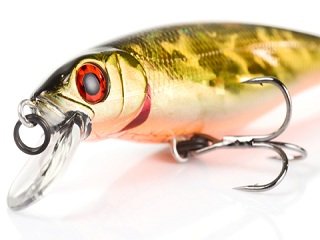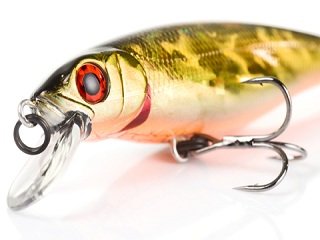 For those of you who have the great fortune of being able to bass fish during the winter, hopefully Part One of this series on year-round jerkbait tactics was a great help. Today, we keep things going with Part Two, where I’ll highlight how to get the most out of jerkbaits during the spring.
For those of you who have the great fortune of being able to bass fish during the winter, hopefully Part One of this series on year-round jerkbait tactics was a great help. Today, we keep things going with Part Two, where I’ll highlight how to get the most out of jerkbaits during the spring.
Really, the spring can be broken into three periods: pre-spawn, spawn, and post-spawn. During the pre-spawn period, fish are starting to make the move from their winter locations to their spawning areas. In early pre-spawn, the water temp is still cold, but increasing warming trends are causing the fish to start to slide to areas like main lake points, secondary points, the ends of bluffs, and the deep edge of flats or shoals. Bass will stop and feed on these staging areas before moving on to their spawning locations.
The water tends to be a bit cold still at this time, so it’s smart to use the same jerkbaits and technique that you used during the winter period, preferably a suspending model. You can also speed up your retrieval speed and cadence a bit. For instance, instead of two twitches, try to make three or four and shorten pause times. Also, there is a lot of big bait this time of the year, so be sure to match the jerkbait selection with the baitfish that are in the water.
When the water temperature approaches the 60-degree mark, the spawn cycle is underway, and will swarm to the shallows in areas such as coves, creeks, bays, and flats. During this period, use suspending and floating jerkbaits, as the suspending models can be great for enticing bedding bass to strike.
Even after the fish are done spawning, jerkbaits can be killers. Bass will be looking for an easy meal, and a slow floating jerkbait does the job. Post spawn fish will often hang around the areas where they have spawned for a while. The males especially will actively guard fry for about a week and the females often move to the first areas of slightly deeper water. At this time, they’ll also have a tendency to suspend around any available cover like docks, trees, or weeds. If you see fry, cast past the patch and bring the jerkbait into the school. This is a great imitator of another gamefish trying to come in and eat some of the fry. You can also try and imitate the fry itself. To do this, use an extremely small jerkbait—one to three inches—and use ultra-light line, along with a light action spinning rod.
Spring offers three distinct periods of bass behavior, but you can still use a jerkbait to capitalize on specific bass activity and pull fish to the boat during the entire season. I hope the tips listed above helped! Be sure to return to summer jerkbait tactics you can use when the weather gets hot.








